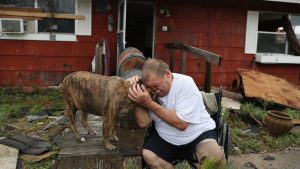 According to CoreLogic’s latest Loan Performance Insights Report, nationwide delinquencies continued to slowly decline, with exceptions in areas still feeling the aftereffects of last year’s brutal hurricane season.
According to CoreLogic’s latest Loan Performance Insights Report, nationwide delinquencies continued to slowly decline, with exceptions in areas still feeling the aftereffects of last year’s brutal hurricane season.
As reported by CoreLogic, the 30+ day delinquency rate for February 2018 was 4.8 percent, down 0.2 percentage points below February 2017’s 5.0 percent. Delinquencies between 30-59 days overdue held steady year-over-year at 2.1 percent, as did 60-89-day delinquencies at 0.7 percent. Delinquencies between 90-119 days overdue inched up slightly from 0.3 percent in February 2017 to 0.4 percent in February 2018. Finally, delinquencies 120 or more days overdue decreased slightly, dropping from 1.9 percent to 1.7 percent year-over-year.
As of February 2018, the foreclosure inventory rate was 0.6 percent.
“Overall delinquency rates fell in the U.S. over the past year, driven by a long run of stringent underwriting, higher employment, and wages. At the same time, our CoreLogic U.S. Home Price Index (HPI) showed a 6.4 percent increase in home-price appreciation for the 12 months, which ended in February 2018. Those factors bode well for the fortunes of both homeowners and mortgage servicers.”
The percentage of delinquencies transitioning from current to 30 days overdue dropped slightly year-over-year, sliding from 1.0 percent to 0.9 percent. Delinquencies transitioning from 30 to 60 days overdue also decreased, dropping from 15.4 percent to 15.2 percent. For delinquencies transitioning from 60 to 90 days, the percentages fell from 24.9 percent to 24.7 percent year-over-year.
Most states saw serious delinquencies decline, although North Dakota’s serious delinquencies remained flat year-over-year at 0.9 percent. Alaska, Florida, and Texas, however, saw their serious delinquency rate increase. Alaska increased by 0.1 percent, Florida by 2.0 percent, and Texas by 0.7 percent, respectively.
“Last year’s hurricanes continue to have an affect on loan performance in affected markets,” Nothaft said. “Serious delinquency rates in February were 50 percent higher than in August 2017 in Texas, and nearly double in Florida, even though the wind and flood damage was primarily in coastal markets. In Puerto Rico, the damage was widespread. Serious delinquency rates were up five-fold over the August-to-February period, with a significant increase in all metropolitan areas there.”
Serious delinquency increased in 32 of the core-based statistical areas (CBSAs) tracked by CoreLogic, remained flat in 9, and decreased in all others.

 DSNews The homepage of the servicing industry
DSNews The homepage of the servicing industry









